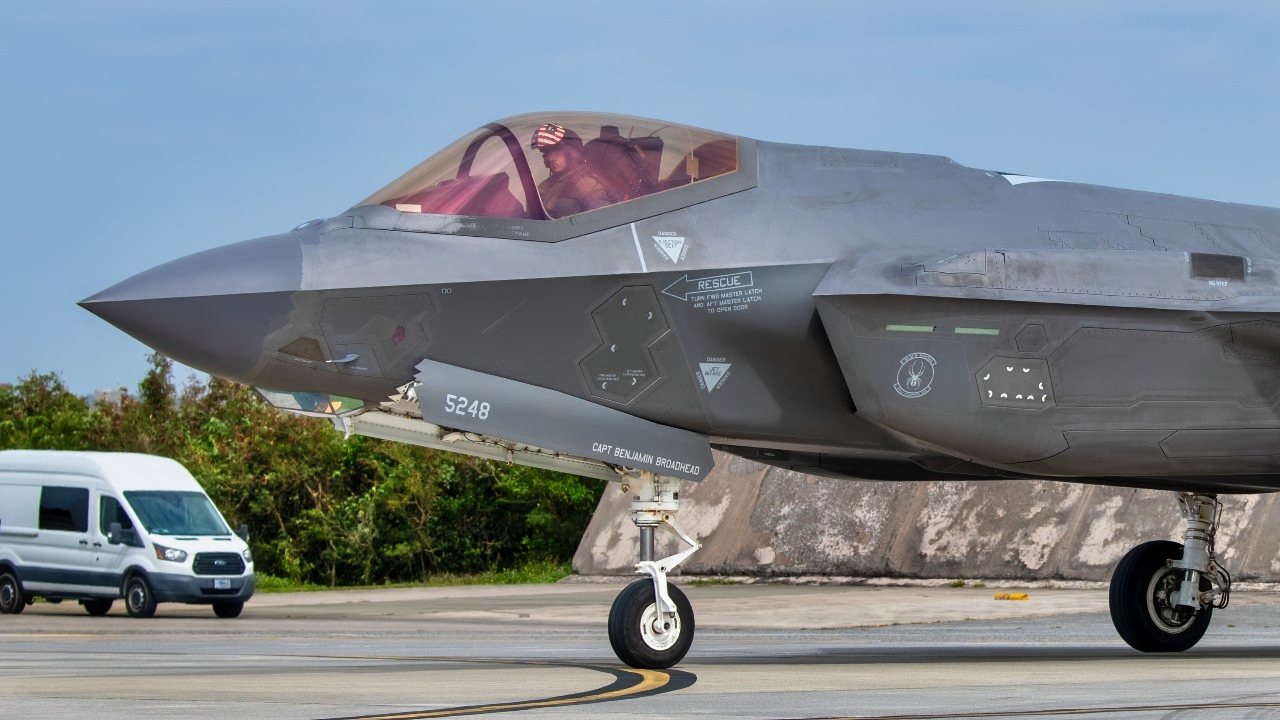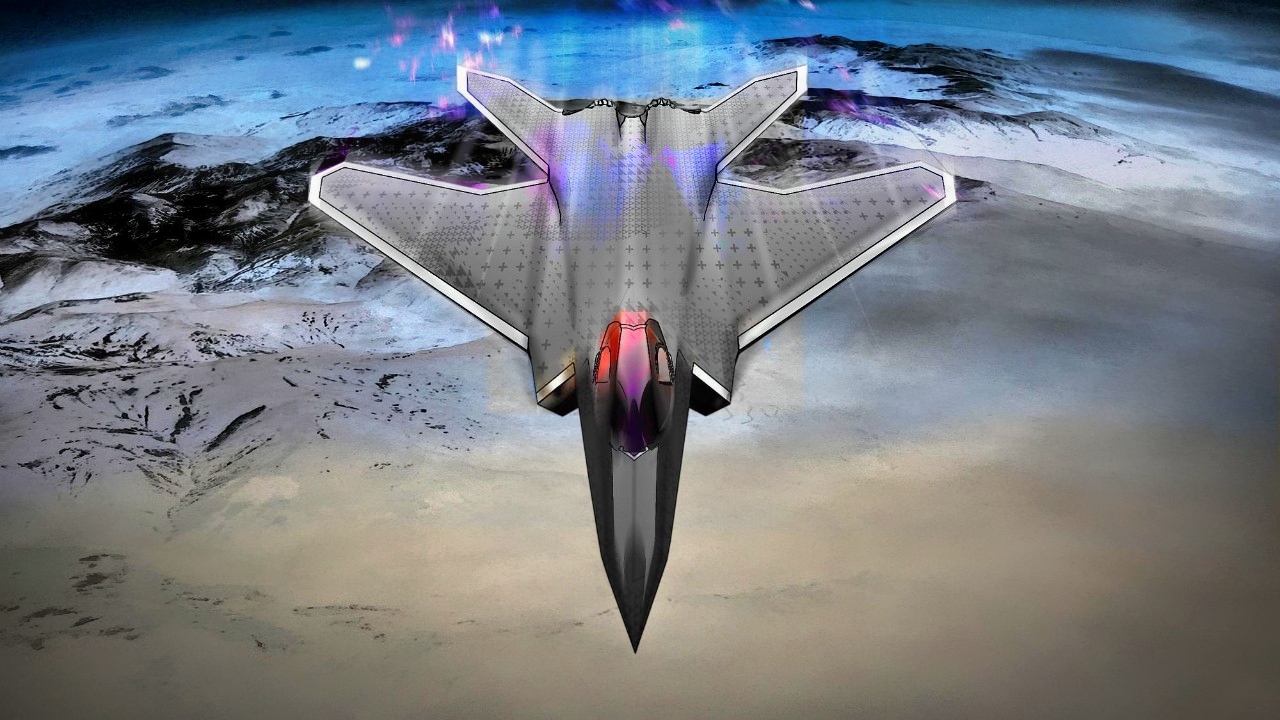Key Points and Summary – A new analysis argues that European nations (like Spain, Switzerland, and Portugal) are “reconsidering” their F-35 purchases not just because of political friction with the U.S., but because of “the deeper issue” of “sovereignty.”
-Citing “disastrous” cost overruns, poor mission-capable rates (51% in 2023), and a U.S. “monopoly” on “black box” software, parts, and mission data, these countries are pivoting.

FCAS Fighter Mock Up. Image Credit: Creative Commons.
-Spain has “formally ruled out” the F-35 entirely to invest in its own defense industry and the multi-national FCAS program to ensure “strategic autonomy.”
The Real Reason Europe Is Reconsidering the F-35
A growing number of European nations that once viewed the F-35 Lightning II as the cornerstone of their future air forces are now reconsidering.
Cost overruns, operational limitations, political pressure, and questions about industrial sovereignty are all coming into play, driving a wave of skepticism towards the world’s best stealth fighter platform.
The F-35 was once hailed as the ultimate symbol of NATO interoperability—and it still is—but it is quickly becoming the center of a significant, continent-wide debate.
From Switzerland’s procurement scandal to Germany’s internal political debates, many European governments are now asking whether continued reliance on an American platform is strategically sound.
And while some will have you believe it’s all because of President Trump, the reality is that political polarization is really only a small part of a bigger puzzle.
Why Europe Bought the F-35
The F-35’s appeal is obvious – and it has been from the outset. It boasts unmatched stealth capability, advanced sensor fusion, and seamless integration with U.S. and NATO forces.
Lockheed Martin marketed it as a cost-efficient and interoperable platform that would tie allies together through shared maintenance and software networks.
And that vision has come true.

Finland with F-35 fighter. Image Credit: Lockheed Martin.
The F-35 is the best, most successful, and most broadly adopted platform of its kind in the world—and even today, as next-generation platforms begin to emerge, it continues to receive upgrades and is being adopted by countries that have never previously used it.
By the early 2020s, at least ten European countries had either ordered or evaluated the F-35. For smaller nations like Denmark and Belgium, joining the U.S.-led program seemed the fastest way to modernize fleets and ensure NATO compatibility.
But as deliveries began, cost and dependency concerns followed. Maintenance expenses exceeded forecasts, spare parts were delayed, and U.S. control over software and mission data became controversial sticking points.
Europe Reconsiders
So, what’s happening in Europe? Let’s start with Switzerland. In 2021, Switzerland signed a deal for 36 F-35A jets worth 6 billion Swiss francs.
By mid-2025, the purchase had turned into a national controversy. A government audit revealed that total costs could exceed 7 billion francs, including infrastructure and maintenance.
Critics argued that Swiss officials had misrepresented the nature of a “fixed-price” agreement—and the political backlash was immediate.
Opposition lawmakers accused the government of undermining Switzerland’s neutrality by tying the nation’s air defense systems to U.S. oversight, too.
Because core software updates, diagnostics, and mission data are all managed via American servers, some claimed that the aircraft effectively gave Washington veto power over operations.
Meanwhile, in Portugal, which was once expected to follow other NATO members into the F-35 program, plans have begun to slow.

An F-35A Lightning II assigned to the 4th Fighter Squadron, Hill Air Force Base, Utah, taxis into position in front of two U.S. Air Force Airmen with the 18th Logistics Readiness Squadron for forward area refueling point operations during a FARP demonstration at Kadena Air Base, Japan, Feb. 14, 2024. FARP allows operators to transfer fuel from one aircraft to another; this process enables fighter aircraft to land, refuel or re-arm before returning to air-battle operations rapidly in contested environments. (U.S. Air Force photo by Airman 1st Class Jonathan R. Sifuentes)
Defense Minister Nuno Melo announced in March 2025 that Lisbon was reassessing future fighter purchases owing to cost concerns and “geopolitical unpredictability” in Washington.
In other words: nobody could predict what Trump might do next – or perhaps more accurately, what world events may prompt the U.S. president to take unconventional action.
The statement came amid reports that Portuguese officials were exploring European-built alternatives, including the next-generation aircraft emerging from the Franco-German-Spanish Future Combat Air System (FCAS) initiative. Behind the scenes, officials reportedly cited nervousness about long-term access to parts and software under a potential second Trump presidency, which has since arrived.
Spain is reconsidering, too. However, that’s probably an understatement. This year, Madrid formally ruled out buying the F-35 in its entirety, doubling down on its participation in FCAS.
Spanish defense officials said that the country’s goal was to protect the domestic industry and ensure access to mission-critical systems that the F-35 program keeps under American control.
The F-35’s “black box” software architecture, which restricts access to flight and mission data, has become a sticking issue for European partners and potential partners.
Spain’s Air Force chief argued that long-term sovereignty requires European-made fighters that can be modified without U.S. approval—a view that has since been echoed by many in the EU defense establishment.
Countries like Norway, Denmark, and the Netherlands have embraced the F-35 but face their own challenges as well. From readiness shortfalls and rising maintenance costs, these European countries risk being lost as other nations look inwards.

U.S. Air Force Capt. Melanie “MACH” Kluesner, F-35A Lightning II Demonstration Team pilot and commander, flies an aerial demonstration certification flight at Hill Air Force Base, Utah, Feb. 22, 2024. Upon the 388th Fighter Wing commander certification, the F-35 Demo Team pilot is required to complete the Air Combat Command Heritage Flight Training Course. (U.S. Air Force photo by Staff Sgt. Kaitlyn Ergish)
So, what’s going on?
Well, Europe’s F-35 doubts aren’t really about Trump – which is what some outlets would have you believe. While Washington’s politics certainly add uncertainty, the deeper issue here is sovereignty.
Europe wants to design, build, and maintain its own next-generation fighters, such as FCAS and Tempest, without depending on U.S. approval for software, upgrades, or mission data.
Rising tensions in the Indo-Pacific are also reinforcing the need for self-sufficient defense industries, capable of sustaining operations if NATO cohesion ever falters. And there’s reason to believe it could, given President Trump’s past comments.
For now, though, the F-35 is a stable platform that many allied nations depend upon. But it’s also a core problem for the alliance.
The long-term trend should be clear by now, however. Europe is looking to ensure its security isn’t contingent on American hardware or political will.
About the Author:
Jack Buckby is a British author, counter-extremism researcher, and journalist based in New York. Reporting on the U.K., Europe, and the U.S., he works to analyze and understand left-wing and right-wing radicalization, and reports on Western governments’ approaches to the pressing issues of today. His books and research papers explore these themes and propose pragmatic solutions to our increasingly polarized society. His latest book is The Truth Teller: RFK Jr. and the Case for a Post-Partisan Presidency.
More Military
Europe and Canada Are Finally Saying No to the F-35 Stealth Fighter
The Exact Day Navy Battleships Became Obsolete Is Clear
The X-44 Manta Has a Message for Every Air Force on Earth










